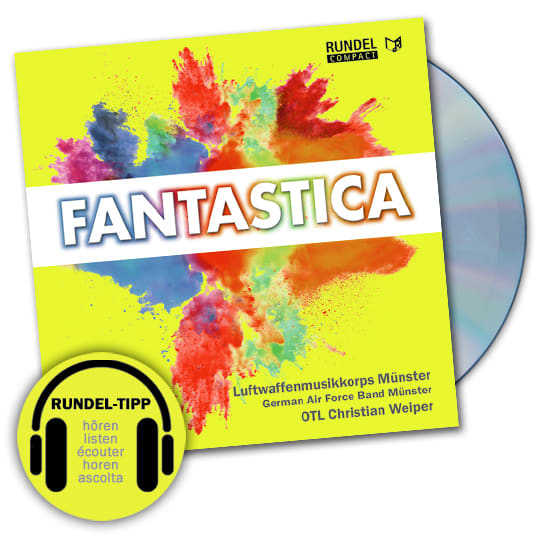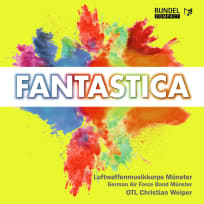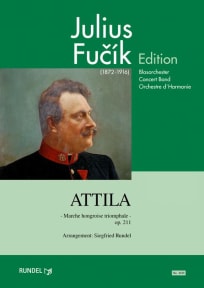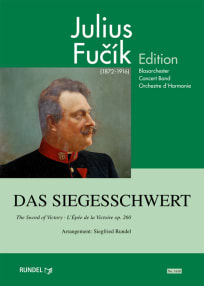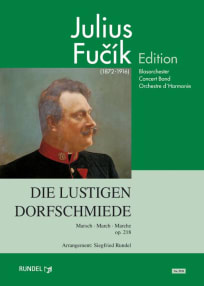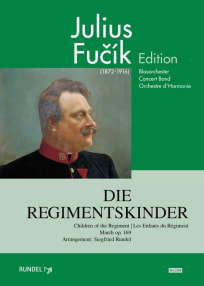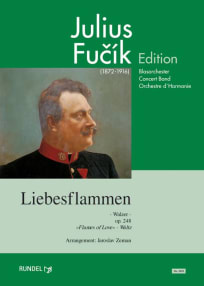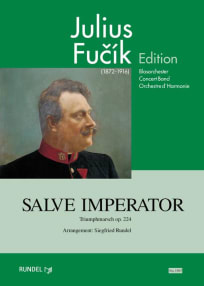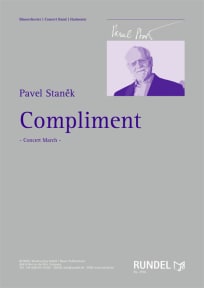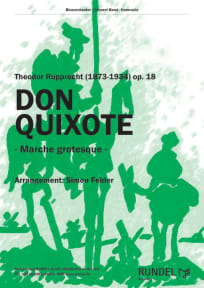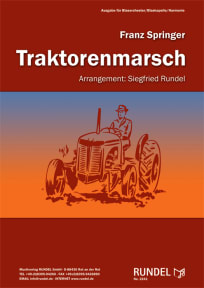Banda (Orchestra di fiati)
Husarenvedette
Vedette of Hussars
Marsch / March / Marche / op. 236
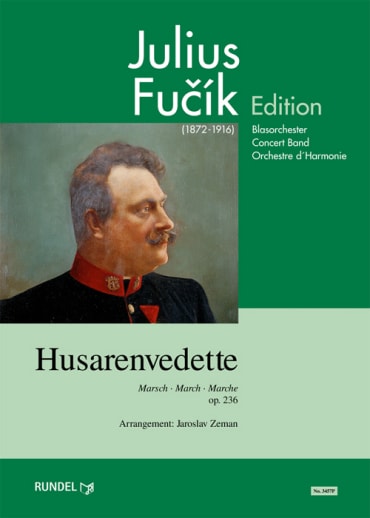
Banda (Orchestra di fiati)
Husarenvedette
Vedette of Hussars
Marsch / March / Marche / op. 236
Compositore
Arrangiatore
Genere
Durata
00:03:00
Difficoltà
Mittelstufe
Editore
Rundel
Formato
A4
Info
Partitura completa + Condensata + Parti
Numero d'edizione
MVSR3457
Data di pubblicazione
2020
Info
The march "Husarenvedette" (“Hussar Vedette”) was created in Budapest in 1910. In May 1909 Fučík had given his last concert as regiment bandmaster of the Infantry Regiment 86 in Budapest. Less pleasing for him was the subsequent transfer of the regiment to Maria Theresiopel (today Subotica, Serbia). For him, this military measure resulted in professional descent. He therefore took his leave of the regiment in January 1910 and temporarily moved to Gleisdorf in Styria. Even the following time at IR 92 in Theresienstadt did not prove to be the hoped-for stroke of luck after his successful time in Budapest, as his colleagues in Prague managed to keep Julius Fučík and his Banda away from Bohemia's capital.
Julius Fučík spent the last part of his life in Berlin, where he founded his own publishing house and developed an interesting concert activity with the Prague Tonkünstler Orchestra. The swinging march called “Husarenvedette” was included in a remarkable double concert on 13 April 1914, which the maestro and his Prague musicians performed with the music corps of the Emperor Franz Gardegrenadier Regiment No. 2 conducted by Chief Music Master Adolf Becker. Strictly interpreted, the march is not a cavalry march, because since the lost war of 1866, no cavalry music was known in the joint kingdom of Austria and Hungary. It was different in Germany, where the image of cavalry music was determined by countless trumpet corps in cavalry and field artillery. The term "vedette" is a military term that is no longer in use today. It refers to the use of mounted soldiers to observe the enemy in front of the army's field posts. Accordingly, this march from Fučík is more a musical impression than a cavalry march. In contrast to many of Fučík’s massive marches, this is a fresh, elegant and basically not very military march, which became popular in Germany faster than in Fučíks Bohemian homeland or the Danube Monarchy as a whole.
Please visit the website of RUNDEL Julius-Fučík-Edition
www.juliusfucik.de
Julius Fučík spent the last part of his life in Berlin, where he founded his own publishing house and developed an interesting concert activity with the Prague Tonkünstler Orchestra. The swinging march called “Husarenvedette” was included in a remarkable double concert on 13 April 1914, which the maestro and his Prague musicians performed with the music corps of the Emperor Franz Gardegrenadier Regiment No. 2 conducted by Chief Music Master Adolf Becker. Strictly interpreted, the march is not a cavalry march, because since the lost war of 1866, no cavalry music was known in the joint kingdom of Austria and Hungary. It was different in Germany, where the image of cavalry music was determined by countless trumpet corps in cavalry and field artillery. The term "vedette" is a military term that is no longer in use today. It refers to the use of mounted soldiers to observe the enemy in front of the army's field posts. Accordingly, this march from Fučík is more a musical impression than a cavalry march. In contrast to many of Fučík’s massive marches, this is a fresh, elegant and basically not very military march, which became popular in Germany faster than in Fučíks Bohemian homeland or the Danube Monarchy as a whole.
Please visit the website of RUNDEL Julius-Fučík-Edition
www.juliusfucik.de
Parole
Concerto di Capodanno
Concerto di Capodanno
Marcia
Richiedi concerto
RUNDEL Edizioni Julius Fucik
RUNDEL YouTube Canal
Ascolta e leggi dal canale YouTube di Rundel
RUNDEL VIDEO
Husarenvedette
Notes available at:
https://www.rundel.de/it/
Vedette of Hussars
Marsch / March / Marche / op. 236
Difficoltà: Grade 2.5 / Stufe B-C / Mittelstufe
Compositore: Fucik, Julius
Arrangiatore: Zeman, Jaroslav
Genere: Marcia concerto, Marcia
Durata: 3,00
Editore: Rundel
Formato: DIN A4
Info: Partitura completa + Condensata + Parti
Rundel Numero d'edizione: MVSR3457
Data di pubblicazione: 2020
https://www.rundel.de/it/
Vedette of Hussars
Marsch / March / Marche / op. 236
Difficoltà: Grade 2.5 / Stufe B-C / Mittelstufe
Compositore: Fucik, Julius
Arrangiatore: Zeman, Jaroslav
Genere: Marcia concerto, Marcia
Durata: 3,00
Editore: Rundel
Formato: DIN A4
Info: Partitura completa + Condensata + Parti
Rundel Numero d'edizione: MVSR3457
Data di pubblicazione: 2020

